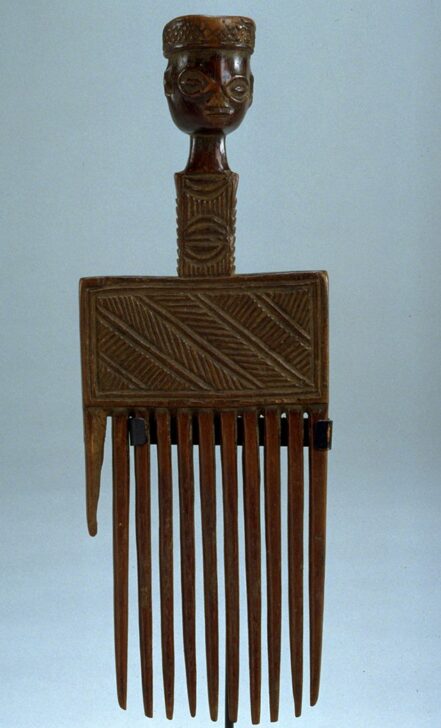Comb
Lunda

Description
Subject Matter:
This large-toothed wooden comb is attributed to the Lunda, who today live in Angola, Zambia, and the Democratic Republic of the Congo. The purpose of combs such as this one is, of course, primarily utilitarian: to provide a firm grip on hair needed to create an elaborate coiffure. The ownership and use of combs cuts across social rank and gender, and decorative ones can certainly be considered a form of personal art. What is paramount in decorative combs are the motifs and specific imagery carved on them which hold a special symbolic and iconographic significance to their owners. In this particular comb, the head most likely represents an ancestral spirit imparting protection, success, or well-being to its possessor. The comb's stylistic features such as its fine geometric pattern and sensitively carved head bear striking similarities to combs of the neighboring Chokwe group. Lunda carving, however, can be distinguished from that of the Chokwe by its softer lines and more rounded forms. Ultimately, this comb can be regarded as both a beautifying object and an object of beauty in its own right.
Physical Description:
This wooden comb includes 11 large teeth, one of which has broken off. Its handle includes a rectangular section with multiple bands of diagonal, incised lines. This rectangular section along with the teeth of the comb visually form an abstracted body for the delicately carved head, which sits atop the handle. The head itself bears fine facial features as evidenced by its straight mouth and narrow eyes with large, round orbits.
Usage Rights:
If you are interested in using an image for a publication, please visit https://umma.umich.edu/request-image/ for more information and to fill out the online Image Rights and Reproductions Request Form.